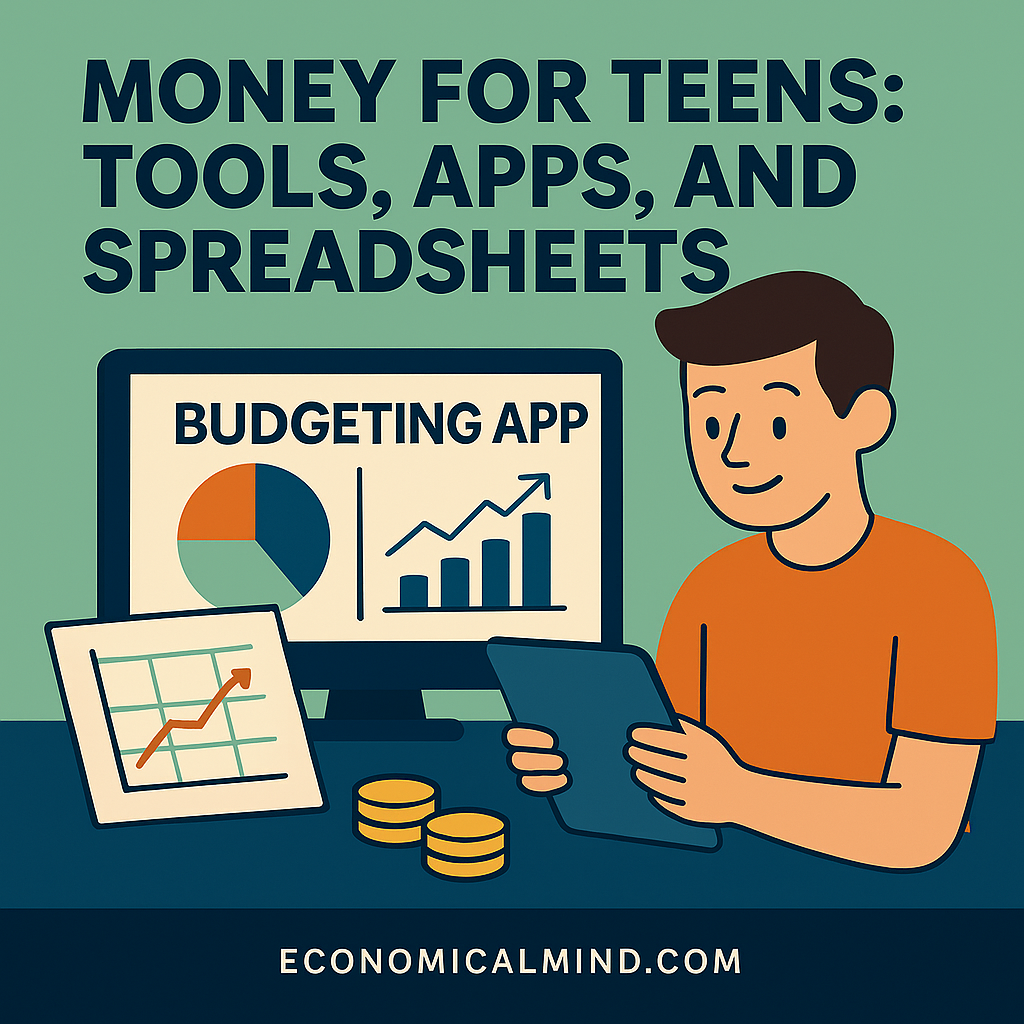
Helping teens learn about money early can set them up for a lifetime of financial confidence and independence. With the right mix of guidance and digital tools, they can understand budgeting, saving, and smart spending in a way that feels natural and empowering.
Why Financial Education for Teens Matters
Financial habits often form before adulthood. When teens learn about budgeting, saving, and responsible spending early, they gain the tools to avoid debt and make smarter choices later in life.
Teen money lessons are most effective when they include:
• Hands-on experience through allowance tracking or small jobs
• Real-life decision-making (like saving for a big purchase)
• Digital tools that make money management fun and visual
Top Tools and Apps for Teens
Technology has made financial learning interactive and easy. These apps and platforms help teens practice healthy habits:
• Greenlight – A debit card and app that teaches saving, spending, and investing with parental oversight.
• GoHenry – Customizable prepaid card and budgeting app that lets teens set goals and track progress.
• FamZoo – Virtual family bank app where parents act as “bankers” and teens earn interest or allowance.
• YNAB (You Need A Budget) – Advanced tool for older teens to learn budgeting by assigning every dollar a purpose.
• Mint – Ideal for tracking spending and understanding financial flow once teens start earning income.
These tools promote independence while giving parents visibility into how money is used.
Using Spreadsheets to Build Money Awareness
A simple spreadsheet is one of the most powerful teaching tools for teenagers. Use it to track:
• Income sources (allowance, part-time job, gifts)
• Expenses (food, entertainment, personal items)
• Savings goals (new phone, college fund, car)
Google Sheets or Excel can automatically calculate totals and show how small habits—like saving 10% of every dollar—add up over time.
Key Lessons Every Teen Should Learn
• Budgeting basics – Spend less than you earn and plan for what’s ahead.
• The power of compound interest – Start saving early to let interest grow.
• Smart spending – Differentiate between needs and wants.
• The importance of goals – Set financial targets and track progress.
• Credit awareness – Understand how borrowing works before getting a credit card.
Parental Involvement: Guiding, Not Controlling
Parents play a key role in teaching money skills. Encourage open conversations and lead by example. Share how you budget, plan for bills, and save for emergencies. Let teens make small financial mistakes—they’re valuable lessons in a low-risk environment.
Common Mistakes to Avoid
• Ignoring real-world costs like taxes or interest
• Focusing only on saving without teaching spending discipline
• Overcomplicating financial lessons too early
• Skipping conversations about long-term goals
Learning to manage money should be practical and engaging—not overwhelming.
The Takeaway
When teens use the right tools, apps, and spreadsheets, they gain real-world financial confidence. A mix of digital learning and guided practice helps them understand that money is not just about numbers—it’s about making thoughtful choices and building the future they want.
